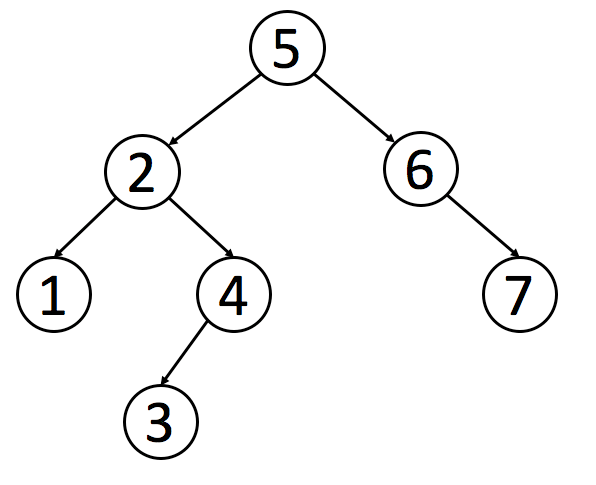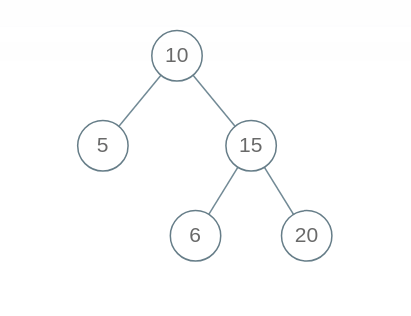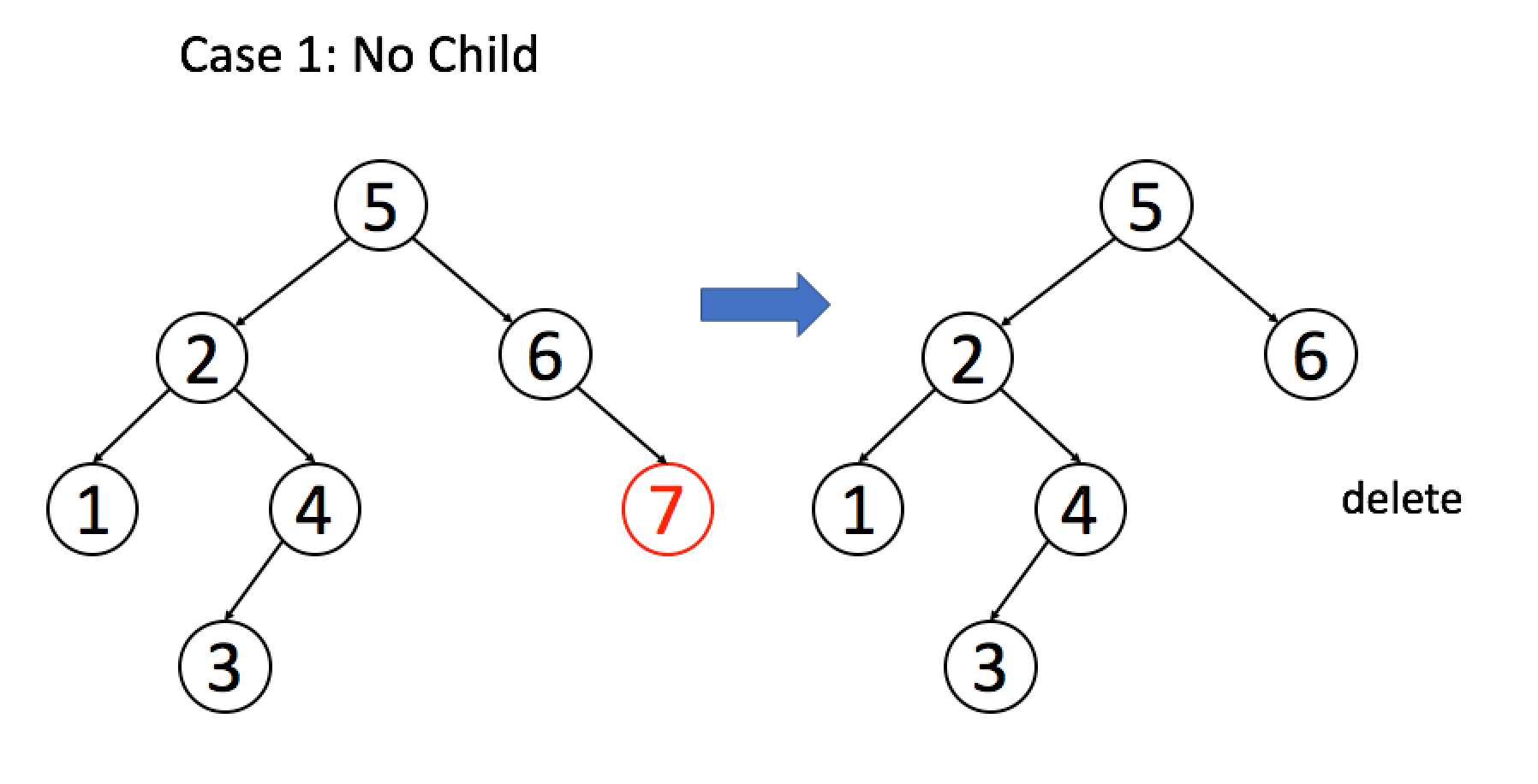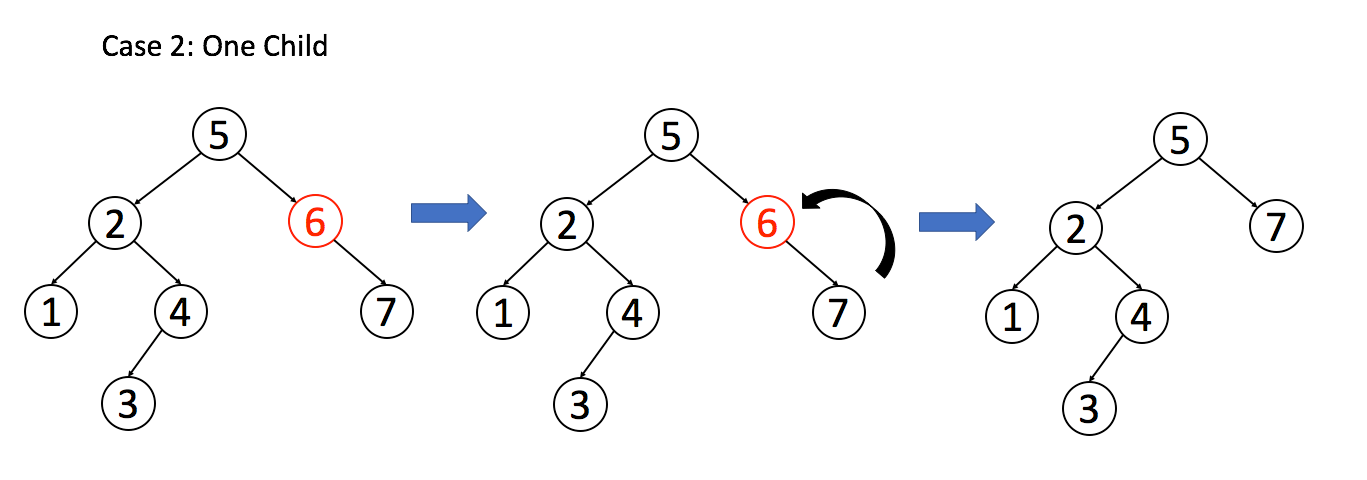二叉树基础遍历 在上一章以解释过 算法框架之数组&链表&二叉树
二叉树扩展
【如何判断两棵二叉树是否完全相同?】
先来道开胃菜 应该很好理解 一共会出现三种情况【空的情况(都空+一个空)+非空情况+递归】
/** * Definition for ListNode. * function ListNode (val) { * this.val = val; * this.next= null; * } */ /** * @param {ListNode } root1 * @param {ListNode } root2 */ */ function issame(root1,root2){ //如果两结点都为空 必然相同 if(root1 == nul l&& root2 == null) return true //【经过上一个条件 没有return的话 说明至少一个不为空,因此还得排除 一个空一个不空的情况】 //如果一个空一个不空 则必不同 if(root1 != null || root2 != null) return false // 【上两个条件排除掉空的情况 因此接下来必然有值】 //遇到值不同时 也是表明是不同的树 if(root1.val != root2.val) return false return issame(root1.left,root2.left)&&issame(root1.right,root2.right) }
二叉搜索树
1.在谈论写法前 先必须知道其定义吧
二叉搜索树(Binary Search Tree,简称 BST)是一种很常用的的二叉树。它的定义是:一个二叉树中,任意节点的值要大于等于左子树所有节点的值,且要小于等于右边子树的所有节点的值。
【下图就是一个二叉搜索树】


2.在书写判定二叉搜索树时,很容易进入一个误区
可能想通过上面的【二叉树框架】+【二叉搜索树定义】依葫芦画瓢 搞一个出来 代码如下
function isValidBST(root) { if (root == null) return true; if (root.left != null && root.val <= root.left.val) return false; if (root.right != null && root.val >= root.right.val) return false; return isValidBST(root.left)&& isValidBST(root.right); }
看似十分正确!满足【每一个子树】 左<根<右 的要求 下图即满足写的这个算法 但明显不满足【二叉搜索树的定义】! (右侧的子树应该也都大于结点 但6与根10不满足)
是否是框架不适用了?亦或者是开头就想错了? 并不!!只需稍作修改即可

先分析为什么不满足情况?
因为 只考虑了子树结点情况 ,并没考虑之前的根节点情况 因此只需 将其记录 每一项的【最大值/最小值】即可
/** * Definition for a binary tree node.
* function TreeNode(val) {
* this.val = val;
* this.left = this.right = null;
* } */ /** * @param {TreeNode} root */ function isValidBST(root) { return isValidBST(root, null, null); } function isValidBST(root, min, max) { if (root == null) return true; if (min != null && root.val <= min.val) return false; if (max != null && root.val >= max.val) return false; return isValidBST(root.left, min, root)&& isValidBST(root.right, root, max); }
3.二叉搜索树找值
先来看看普通的树如何找值呢?
function find(root,target) { if(root==null) return false if(root.val==target) //找到的操作 return true return find(root.left,target)||find(root.right,target) }
那在对二叉搜索树找值时 是否有好的方法呢? 或者说利用【二叉树的特性】
function find(root, target) { if (root == null) return false; if (root.val == target) return true; if (root.val < target) return find(root.right, target); if (root.val > target) return find(root.left, target); }
4. 二叉搜索树之查 框架
由上述2,3点+【二叉搜索树定义】可得框架
/** * Definition for a binary tree node. * function TreeNode(val) { * this.val = val; * this.left = this.right = null; * } */ /** * @param {TreeNode} root * @param {Number} target */ function BST(root, target) { if (root.val == target) // 找到目标,做点什么 if (root.val < target) BST(root.right, target); if (root.val > target) BST(root.left, target); }
5. 二叉搜索树之增 框架
说到底 就是【二叉搜索树之查】的修改版 => 先查到位置 再新建结点 加入即可
注:一般增加操作要求返回根结点
function insertIntoBST(root, val) { // 找到空位置插入新节点 if (root == null) return new TreeNode(val); // if (root.val == val) // BST 中一般不会插入已存在元素 if (root.val < val) root.right = insertIntoBST(root.right, val); if (root.val > val) root.left = insertIntoBST(root.left, val); return root; }
6. 二叉搜索树之删 框架
删除是最麻烦的一个操作 要分三种情况【无孩子】【有一个孩子】【有左右孩子】
1、无孩子
十分方便 只需将其删除即可
if (root.left == null && root.right == null) return null;

2、有一个孩子
将其替代之前的位置

// 排除了情况 1 之后 if (root.left == null) return root.right; if (root.right == null) return root.left;
3、有两个孩子
此种情况最为麻烦:
1.删除本值,寻找左子树的最大值/右子树的最小值,替换位置

由于只需替换一种 此处用替换左子树最大值为例:
if (root.left != null && root.right != null) { // 找到左子树的最大节点 var maxNode = getMax(root.left); // 把 root 改成 maxNode root.val = maxNode .val; // 转而去删除 maxNode root.left= deleteNode(root.left, maxNode.val); }
4、 整体【二叉搜索树之删】框架
function deleteNode(root, int key) { if (root == null) return null; if (root.val == key) { // 这两个 if 把情况 1 和 2 都正确处理了 if (root.left == null) return root.right; if (root.right == null) return root.left; // 处理情况 3 var maxNode = getMax(root.left); root.val = maxNode.val; root.left= deleteNode(root.left, maxNode .val); } else if (root.val > key) { root.left = deleteNode(root.left, key); } else if (root.val < key) { root.right = deleteNode(root.right, key); } return root; } //找左子树中的最大值【找左子树的最右下角的值】 function getMax(node) { while (node.right!= null) node = node.right; return node; }